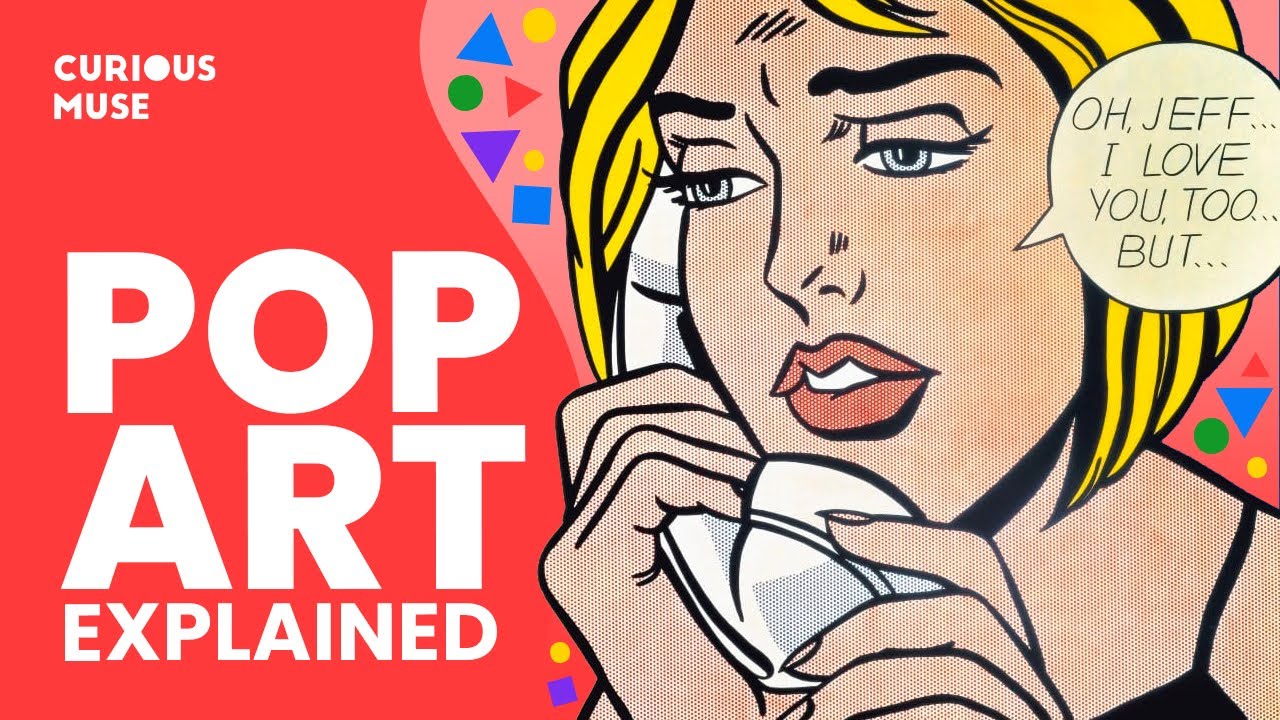Lecture: Professor Ellen Lupton on Pop Art and Graphic Design
Summary
TLDRThe presentation focuses on pop artist Andy Warhol and Roy Lichtenstein and how their techniques of enlarging halftone dots and Benday dots made visible printing textures usually designed to disappear. It illuminates how Warhol's distinctive ink line was derived from a tracing paper transfer process. It explains Lichtenstein's painstaking method of applying uniform Benday dots with stencils versus gestural artists like Pollock. It shows both artists appropriating commercial art subjects like ads, comic books and celebrities considered 'feminine'. The talk explores how their interrogation of printing processes and commercial imagery was considered subversive yet hugely influential on graphic design.
Takeaways
- 😀 Andy Warhol invented his own distinctive ink drawing style using a blotted line technique
- 👩🎨 Warhol's mother Julia Warhola did lettering for many of his commercial illustrations
- 🔎 Roy Lichtenstein blew up and exposed the benday dot, making visible this previously overlooked printing technique
- 🖌 Lichtenstein used perforated metal stencils and a toothbrush to mechanically apply uniform dots to his canvases
- 👄 Both Warhol and Lichtenstein featured dramatically enlarged lips in their pop art
- 🌇 Adele Weber used rubber stamp lips to create prints and painted over them, playing with ideas of traces and prints
- 🇺🇸 Jasper Johns flag paintings were things seen but not examined - the graphics of flags rendered in paint
- ✊🏿 Faith Ringgold’s political posters of bleeding and violent American flags confronted laws against desecrating the flag
- 🎨 Ringgold developed a color theory she termed 'black light' using deep, vibrant hues to celebrate black skin
- 👩💻 'Old ladies' working for minimum wage manually produced the benday dots that colored the comic books Lichtenstein appropriated
Q & A
What technique did Andy Warhol invent to create his distinctive ink drawing style?
-Warhol created a process where he would make a drawing on tracing paper and then ink the back of the tracing paper with wet India ink. The tracing paper was then pressed onto a piece of illustration board to create a print, leaving gaps and blobs that became part of his signature style.
How were Ben Day dots used in commercial printing?
-Ben Day dots were used in commercial printing to reproduce illustrations, comic books, maps, and fashion illustrations. They were applied by hand using a complex mechanical contraption to create tone and texture.
How did Roy Lichtenstein differ from pop artists in his use of Ben Day dots?
-Unlike other pop artists who used enlarged halftone dots from photographs, Lichtenstein used uniform benday dots. He had to invent his own method of transferring them to canvas using perforated metal stencils and pressing paint through with a toothbrush.
What was unique about Adele Weber's use of lips in her pop art?
-In a drawing covered in stamped lips, Weber painted a businessman silhouette over the top, symbolically showing lips as a sexualized feminine 'mark' or conquest being covered up and controlled by male authority.
How did symbols like flags feature in pop art and graphic design?
-Pop artists like Jasper Johns used common symbols like flags to explore things seen but not examined. Graphic designers in the 1960s then adopted flag motifs to make stark, printed political posters.
How did Andy Warhol's mother Julia collaborate in his commercial illustration work?
-Julia Warhola worked side-by-side with Andy, sometimes doing ink drawings and lettering for commissions. She received credit under the name 'Andy Warhol's Mother'.
How was photo reproduction used in creating pop art works?
-Many pop artists appropriated images from mass media like newspapers and advertisements and blew them up as a basis for paintings, often preserving and accentuating the halftone dots.
How did Andy Warhol and Roy Lichtenstein represent different approaches to creating pop art?
-Warhol embraced imperfect mechanical reproduction while Lichtenstein invented meticulous manual techniques to create the illusion of perfect mechanical dots and crisp commercial style.
How did graphic designers respond to pop art innovations?
-Graphic designers immediately adopted pop art motifs like blown-up dots into campaigns for products like the 5up soda brand identity.
How did Faith Ringgold's 'Black Light' posters relate to pop art?
-Ringgold's psychedelic color theory for celebrating black skin related to trippy San Francisco rock posters, building on modernist color theory Ringgold learned as an art student.
Outlines

This section is available to paid users only. Please upgrade to access this part.
Upgrade NowMindmap

This section is available to paid users only. Please upgrade to access this part.
Upgrade NowKeywords

This section is available to paid users only. Please upgrade to access this part.
Upgrade NowHighlights

This section is available to paid users only. Please upgrade to access this part.
Upgrade NowTranscripts

This section is available to paid users only. Please upgrade to access this part.
Upgrade Now5.0 / 5 (0 votes)





